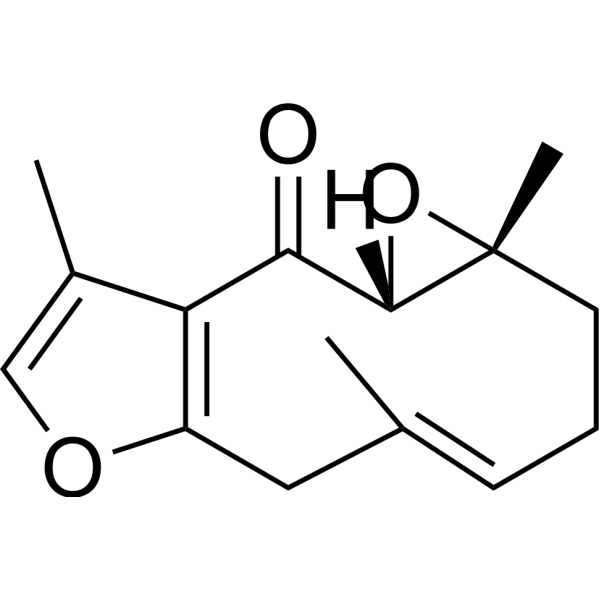
Zederone
CAS No. 7727-79-9
Zederone( —— )
Catalog No. M31299 CAS No. 7727-79-9
Zederone has anti-bacterial activity,it inhibits gram-positive bacteria activity. Zederone induces hepatotoxicity implicated the induction of Cyps, which leads to the formation of biological reactive metabolites and that cause the oxidative stress and liver cell injuries.
Purity : >98% (HPLC)
 COA
COA
 Datasheet
Datasheet
 HNMR
HNMR
 HPLC
HPLC
 MSDS
MSDS
 Handing Instructions
Handing Instructions
| Size | Price / USD | Stock | Quantity |
| 5MG | 381 | In Stock |


|
| 50MG | Get Quote | In Stock |


|
| 100MG | Get Quote | In Stock |


|
Biological Information
-
Product NameZederone
-
NoteResearch use only, not for human use.
-
Brief DescriptionZederone has anti-bacterial activity,it inhibits gram-positive bacteria activity. Zederone induces hepatotoxicity implicated the induction of Cyps, which leads to the formation of biological reactive metabolites and that cause the oxidative stress and liver cell injuries.
-
DescriptionZederone has anti-bacterial activity,it inhibits gram-positive bacteria activity. Zederone induces hepatotoxicity implicated the induction of Cyps, which leads to the formation of biological reactive metabolites and that cause the oxidative stress and liver cell injuries.
-
In Vitro——
-
In Vivo——
-
Synonyms——
-
PathwayOthers
-
TargetOther Targets
-
Recptor——
-
Research Area——
-
Indication——
Chemical Information
-
CAS Number7727-79-9
-
Formula Weight246.3
-
Molecular FormulaC15H18O3
-
Purity>98% (HPLC)
-
Solubility——
-
SMILES——
-
Chemical Name——
Shipping & Storage Information
-
Storage(-20℃)
-
ShippingWith Ice Pack
-
Stability≥ 2 years
Reference
molnova catalog



related products
-
Hispolon
Hispolon is a polyphenol. Hispolon can be isolated from Phellinus linteus. Hispolon exhibits anticancer, antidiabetic, antiviral, hepatoprotective, antioxidant, and anti-inflammatory activities.
-
Didemnin B
Didemnin B is a cyclic depsipeptide that has antiviral and antitumor activity.
-
Fenoprofen Calcium
Fenoprofen Calcium is a nonsteroidal, anti-inflammatory antiarthritic agent.



 Cart
Cart
 sales@molnova.com
sales@molnova.com


